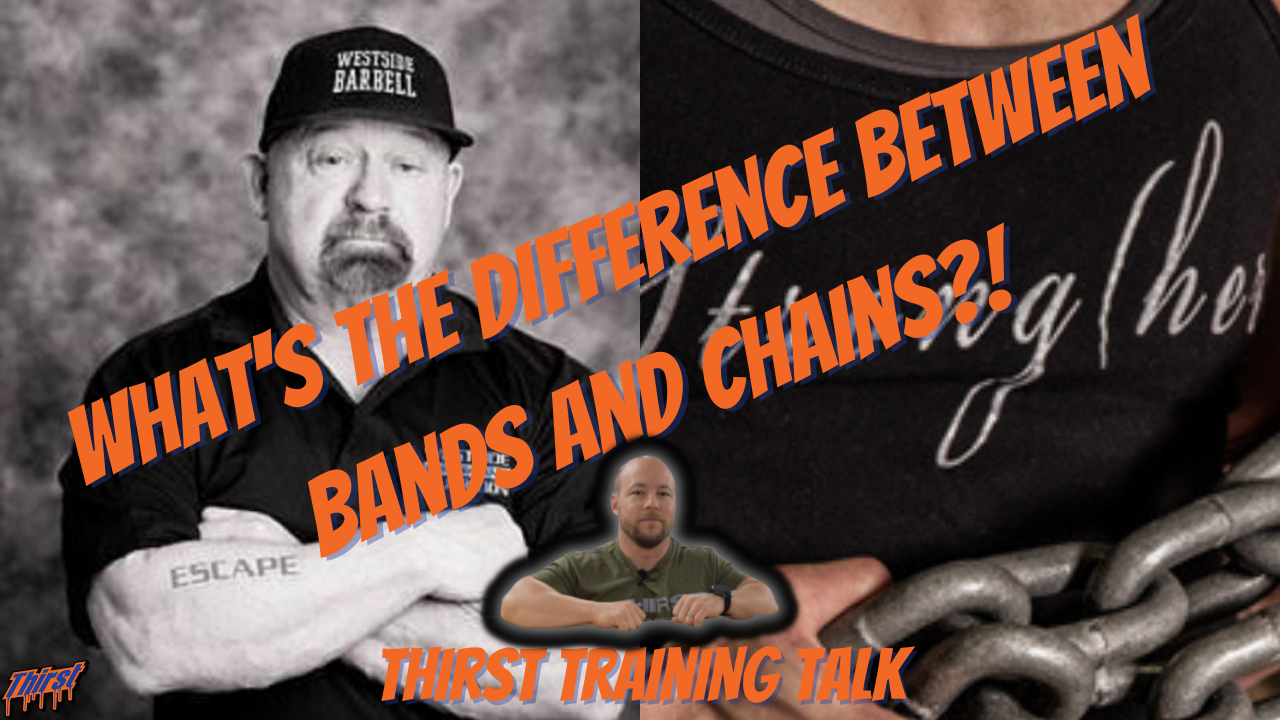Bands vs Chains in Strength Training: A Complete Guide to Accommodating Resistance
Whether you’re a powerlifter, performance athlete, or someone looking to get stronger and more muscular, understanding the nuances of training equipment can significantly impact your results. Today, we’re diving deep into two powerful tools in strength training: resistance bands and chains. Both offer unique benefits through accommodating resistance, but knowing when and how to use each can make all the difference in your training progress.
You can also check out the video below to gather all the information that goes along with this article.
Understanding Accommodating Resistance
Before we break down the differences between bands and chains, it’s crucial to understand the concept of accommodating resistance. This training principle addresses a fundamental aspect of human biomechanics: our strength varies throughout different positions in an exercise. Take the squat, for example. Most people are weakest at the bottom of the movement, where leverage is poorest, and strongest at the top. This is why you’ll often see gym-goers quarter-squatting more weight than they can handle in a full squat.
Both bands and chains work with this strength curve by varying the load throughout the movement. As you descend, the weight decreases; as you rise, it increases. This matches your body’s natural strength curve, allowing for optimal loading throughout the entire range of motion.
Resistance Bands: The Dynamic Option
When we talk about resistance bands in strength training, we’re not referring to the light resistance bands used for rehabilitation or mobility work. We’re talking about heavy-duty bands designed to add significant resistance to barbell movements.
Key Benefits of Bands:
- Overspeed Eccentrics: Perhaps the most significant characteristic of bands is their ability to create overspeed eccentric loading. As you lower the weight, the bands actually pull you down faster than normal, creating a greater stretch in your muscles.
- Enhanced Muscle Response: This increased stretch triggers a stronger muscular contraction through a principle called the stretch-shortening cycle. Your muscles, like rubber bands themselves, want to return to their resting position when stretched, leading to more explosive concentric movements.
- Speed Development: The overspeed eccentric component makes bands particularly effective for athletes looking to develop explosive power and speed.
Potential Drawbacks:
- Higher Recovery Demands: The enhanced eccentric stress from bands typically leads to greater muscle soreness and longer recovery times.
- Grounding Effect: Bands can create an artificial feeling of stability, similar to a Smith machine, which might not transfer perfectly to free weight movements.
Chains: The Steady Progressive Option
When implementing chains, we’re talking about serious equipment – typically 5/8-inch chains weighing about 20-25 pounds per pair. These aren’t your standard hardware store chains; they’re specialized tools for serious training.
Key Benefits of Chains:
- Progressive Loading: Chains provide a smoother progression of weight through the range of motion compared to bands.
- Natural Movement: Unlike bands, chains don’t create artificial pulling forces, allowing for more natural movement patterns.
- Lower Recovery Demands: Without the overspeed eccentric component, chain work typically results in less muscle soreness.
- Instability Training: The subtle movement of chains creates minor instability, which can be particularly beneficial for athletes training for unpredictable environments.
Potential Drawbacks:
- Less Speed Enhancement: Without the overspeed eccentric component, chains may not be as effective for pure speed development.
- Storage and Setup: Chains require more space and can be more cumbersome to set up compared to bands.
Implementation Guidelines
For both bands and chains, the general rule of thumb is to use between 20-25% of your working weight in accommodating resistance. For example, if you’re a 400-pound squatter, you’d want 80-100 pounds of band or chain resistance at the top of the movement.
When to Choose Bands:
- Speed development is a primary goal
- You need to enhance explosive power
- You’re working with athletes who need to develop faster movement patterns
When to Choose Chains:
- Recovery capacity is limited
- You’re working with athletes who need to handle unstable loads
- You want to maintain more natural movement patterns
- You’re dealing with injuries or looking to reduce joint stress
Programming Considerations
It’s important to note that neither bands nor chains should be used exclusively or year-round. They should be cycled into your training at appropriate times and for specific purposes. Consider these factors when programming:
- Training Phase: Both tools work well in speed-strength and strength-speed phases, but the implementation will differ.
- Recovery Capacity: If you’re already doing high-volume work, chains might be the better choice to manage fatigue.
- Sport-Specific Needs: Consider the demands of your sport or goals when choosing between bands and chains.
Conclusion
Both bands and chains have their place in a well-designed strength program. The key is understanding your goals and selecting the tool that best aligns with them. Remember that these are advanced training tools that should be implemented thoughtfully and progressively. Whether you choose bands for their speed enhancement properties or chains for their smoother progressive loading, both can contribute significantly to your strength and performance goals when used appropriately.
Want to learn more about implementing bands and chains in your training? Check out our detailed setup guides for squat, bench press, and deadlift here on our blog below.
How To Set Up Bands For The Squat
How To Set Up Chains For The Squat
How To Set Up Bands For the Bench Press
How To Set Up Chains For The Bench Press








